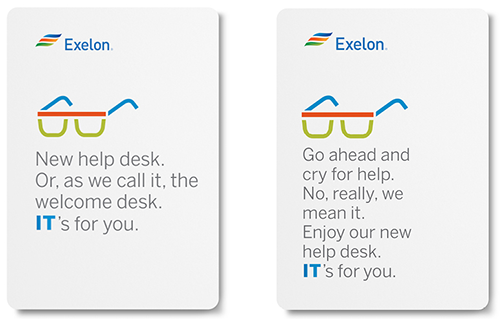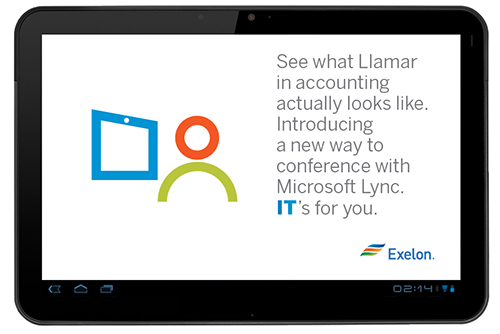Gagen MacDonald has supported research commissioned by the Institute for Public Relations to investigate how PR and corporate communications executives can apply the findings of neuroscience to their work. By understanding key ideas in neuroscience, cognitive behavior and psychology, we can become better storytellers and therefore foster engagement, align culture and drive behavior change. This post will be the first in a series exploring that research. Learn more at our upcoming Storytelling for Business Seminar with the Conference Board.
Storytelling is the new buzzword for corporate communications. We know stories can crack open our public image and reveal our inner humanity. They can show our vulnerabilities, our hopes, our pain, our emotional connection to work. They can reveal meaning, build empathy, and inspire. They can be risky. And that’s why storytelling is so effective and a powerful concept to lead change.
Yet most corporate communicators still feel compelled to ground their messages – even their most personal stories - in statistics, logical explanations, facts. The emerging field of behavioral communications proves this approach dead wrong.
Logic alone cannot spark employee engagement, nor can it persuade someone to make a decision to act. According to research from the University of Virginia, the more people are forced to think logically and justify their preferences, the worse they feel about their choices and more they regret them later. Let’s face it: No one really eats chocolate for the antioxidants. However, as much we want to see ourselves as rational beings, we are feeling creatures first and foremost.
Why are emotions more persuasive and effective than logic?
- Revealing emotions makes stories more credible. In a much-cited experiment, researchers showed several versions of a story of a father whose son is dying of cancer to encourage listeners to donate money to a charity. Versions of the story that emphasized statistics yielded fewer donations; versions of the story that illuminate the father’s feelings about his son’s condition made listeners open their wallets. Emotions are more credible on an intuitive level that logic can’t touch. Introduce too many facts and you risk diluting a gut intuition.
- Emotionally infused messages are more memorable. Research from neuroeconomist Paul Zac and others have shown that compelling stories boost the hormones oxytocin and cortisol. These hormones help forge a powerful emotional connection while improving listeners’ retention of the message. A story that unlocks strong feelings lingers in the mind.
- Evocative stories overcome objections. Focusing on facts can lead to analysis paralysis, according to Antonio Demasio, professor of neuroscience at the University of Southern California. There is always a reason not to take action. Emotion allows people to mark choices as good/bad/indifferent, which in turn allows them to move beyond objections.
- Emotional narratives accelerate behavior change. Experiments involving stories and behavior change confirm an intuition we’ve learned around campfires in the past – namely, that traditional narrative structure promotes empathy in listeners, and empathy drives positive behavior change. Put more simply, emotional appeal is what inspires the listener to take action.
- Stories start a viral wave. People who are moved by your message are far more likely to share them with their social networks. Emotion triggers emotion.
Appealing to the emotions doesn’t have to mean sappy messages, either. Humor is an under-exploited emotion in corporate storytelling – and an effective one. After Exelon Corporation and Constellation Energy merged, their technology infrastructure needed updating as well as standardization. The CIO decided to modernize their technology infrastructure to offer new capabilities and benefits to Exelon’s 35,000 employees.
Recognizing that most people find technology changes either frustrating or mind-numbing, Exelon asked Gagen MacDonald to help with the rollout. Our approach was to use humor, especially since IT departments often have the reputation of being rigid, unhelpful, or robotic. Humor helped break down any negative feelings employees might have had toward the transition and repositioned IT as approachable group focused on helping employees work smarter. The “IT’s for You” campaign focused on tangible benefits for employees, while acknowledging that the transition may be difficult at times.

Humor is famously subjective, and it does take guts to crack a joke in a public setting. Here are tips for incorporating it into your corporate communications:
- Be unexpected. Often a joke is simply something unexpected that breaks up the monotony of a meeting. Pay special attention to the rhythm of the message. Timing in humor is everything.
- Use concrete details. In the example below, we gave an imaginary employee a name, Llamar, channeling the soundtrack inside all our heads. In this case, why not acknowledge that a likely motivator for using this new system would be curiosity: I wonder whether Llamar in accounting is as cute as he sounds on the phone?
- Voice what they are thinking, but afraid to say out loud. Not only will this get a laugh, it makes the message feel more authentic.
Whether you opt for humor or other emotions, practice the discipline of letting the story speak for itself, with its emotional pull intact. Use facts and logic sparingly; they will persuade only a few listeners and distract the rest. Like a great campfire tale, your story needs to light up the darkness with feelings, connecting the circle of listeners in empathy. Logic doesn’t hold that extraordinary power to impress and persuade; only emotion does.

